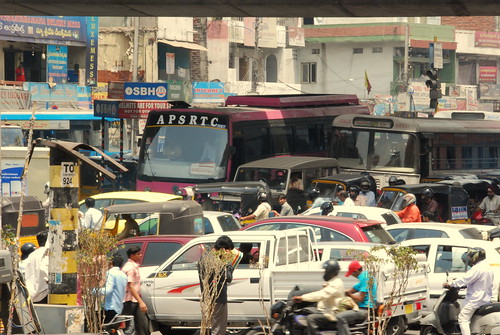Do you know that over 90% of the world’s fatalities on the roads occur in low-income and middle-income countries, which have only 48% of the world’s registered vehicles?
1.2 million people will die this year as a result of road crashes – more than 3200 deaths each day.
About 50 million people will be injured in road crashes this year, millions of whom will be disabled for life.
90% of deaths due to road crashes occur in developing countries, mostly among pedestrians, bicyclists and motorcyclists – those less likely to own a car.
Road crashes cost low- and middle-income countries an estimated US $ 65 Billion each year – more than they receive in development aid.

Image Courtesy: World Health Organization
Approximately 1.3 million people die each year on the world’s roads, and between 20 and 50 million sustain non-fatal injuries. In most regions of the world this epidemic of road traffic injuries is still increasing. In the past five years most countries have endorsed the recommendations of the World report on road traffic injury prevention which give guidance on how countries can implement a comprehensive approach to improving road safety and reducing the death toll on their roads.
To date, however, there has been no global assessment of road safety that indicates the extent to which this approach is being implemented. This Global status report on road safety is the first broad assessment of the status of road safety in 178 countries, using data drawn from a standardized survey conducted in 2008.
The results show that road traffic injuries remain an important public health problem, particularly for low-income and middle-income countries. Pedestrians, cyclists and motorcyclists make up almost half of those killed on the roads, highlighting the need for these road users to be given more attention in road safety programmes.

Image Courtesy: Apture
The results also suggest that in many countries road safety laws need to be made more comprehensive while enforcement should be strengthened. TheGlobal status report on road safety results clearly show that significantly more action is needed to make the world’s roads safer.
The results provide a benchmark that countries can use to assess their road safety position relative to other countries, while internationally the data presented can collectively be considered as a global “baseline” against which progress over time can be measured. Here is a quick summary of key findings from WHO’s Director-General, Dr. Margaret Chan’s statement during the June 15, 2009 release of the report in New York City:
- Over 90% of these deaths occur in low-income and middle-income countries, which have less than half of the world’s registered vehicles.
- Second, the report highlights that nearly half of those dying on the world’s roads are pedestrians, cyclists or motorcyclists. These people, who lack the protective shell of a car, are particularly vulnerable to severe and fatal injuries following a crash. In some low-income and middle-income countries, this proportion is even higher, with up to 80% of road traffic deaths among these vulnerable groups. Clearly we are not giving enough attention to the needs of pedestrians, cyclists and motorcyclists, many of whom end up in clinics and emergency rooms, overloading already stretched health-care systems.
- Third, the report shows that, in many countries, the laws needed to protect people are either not in place or too limited in their scope. Indeed, only 15% of countries have comprehensive laws on all the risk factors we measured. And even when legislation is adequate, most countries report that enforcement is low. The development and effective enforcement of legislation are key ways to reduce drink-driving and excessive speed, and to increase the use of helmets, seat-belts and child restraints.
- Finally, the report demonstrates that in many countries information about road traffic injuries is scarce. To set priorities and target and evaluate their actions, countries need to know the size of the problem, and additional information such as which groups are most affected.
Click here to access the PDF report.






